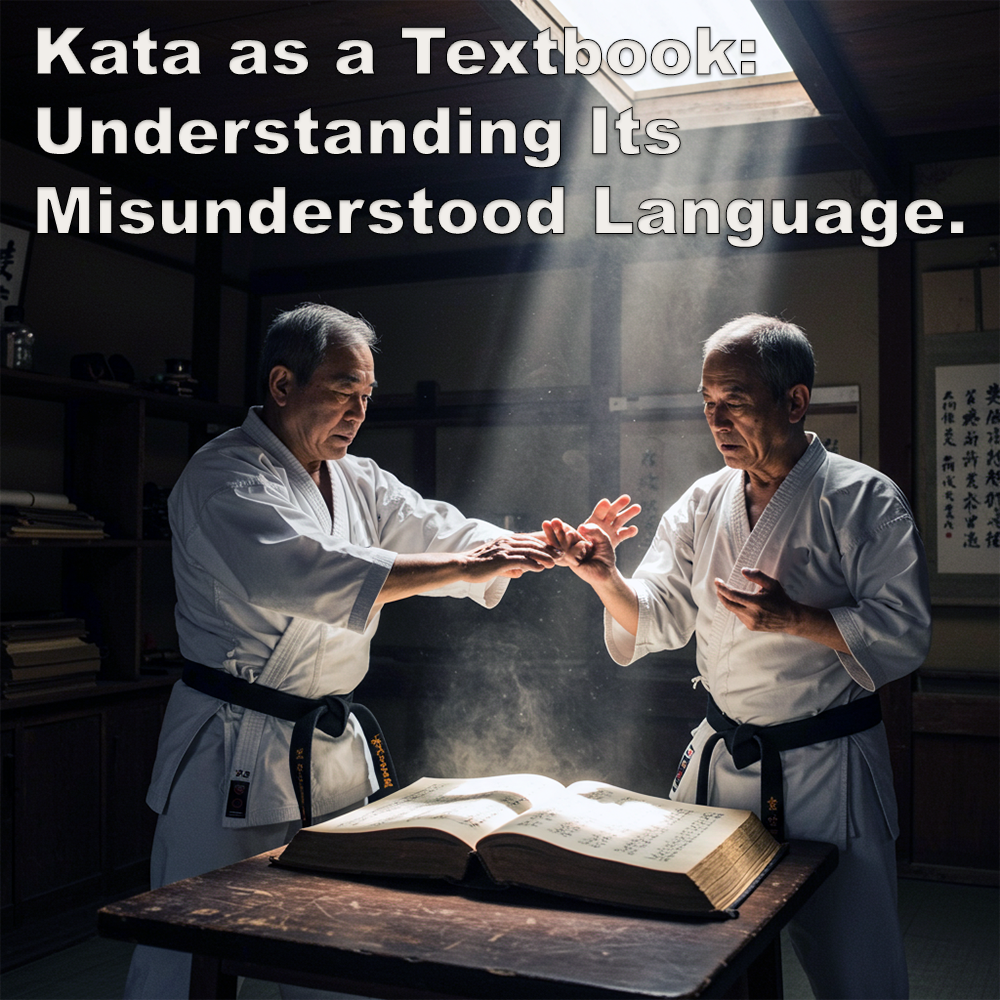
(Approx 2 minute 40 second read)
Kata means many things to many people. For some, it’s just a bunch of basics – something to help practice those basics, or maybe something more. Once again, only recently someone said to me, “Kata is useless.”
.
You can choose to see kata as something you do for promotion or to compete in tournaments, or that it represents the art side of karate. It’s up to you – and your instructor. You choose.
.
But you can also choose to see kata as a textbook – something passed down for you to learn from, not just to learn.
.
If you decide to use kata in this way, several things need to be considered – and probably reconsidered.
.
One of those is the name of a given technique. I write about this a lot, because the name shapes how we see and understand the movement. I prefer to call them movements rather than techniques, when working on applications, because once you remove the label, you start to see multiple possibilities.
.
We’re told that a certain technique is called an upper block – jodan-uke, jodan age uke, and so on. That label then defines what it’s supposed to do. The name sticks, and from then on, that’s what we see.
.
This way of naming – by one supposed function – limits our ability to find other uses for the movement.
.
Take, for example, a Swiss Army knife. You might think of it as a knife, but it can open bottles, cut rope, tighten screws, even act as scissors or tweezers. Its name doesn’t limit its usefulness – its design and your intent determine what it can do. You get the idea.
.
We don’t limit a Swiss Army knife’s usefulness just because it’s called a ‘knife’. It can do much more, depending on how you use it.
.
But in kata, we often limit our understanding of movements because of the names we learned. That’s a problem.
.
Another thing is the word block. Lower block, middle block, upper block – we all know the terms. But almost none of these movements are truly blocks. They deflect, redirect, absorb, strike, and more. You know this, right? But that’s the point. The name doesn’t match the movement.
.
Blocks, as many people interpret them, involve meeting force with force.
.
But rarely are we taught to yield – to go with the motion and use it to our advantage. That’s the jū – the soft side of karate that exists in many methods, even if it’s not always emphasized.
.
Because we’re taught to use blocks forcefully, we often find it hard to see them as anything else.
.
And here’s one of the biggest obstacles: karate is usually taught as a striking art. We’re taught to punch, kick, and block. So we learn to respond with strikes and kicks, and we tend to see everything through that lens.
.
Karate means “empty hand”. It does not mean “kick and punch”. But we’ve added layers of interpretation that have made karate seem exclusive to those things.
.
The truth is, karate has throws, locks, chokes, takedowns – it’s all there. We practice these movements in kata, but we don’t recognize them for what they are. Instead, we try to force everything into block, strike, and kick. Why? Because that’s what we were taught, that’s what we’ve drilled, and that’s what we’ve become good at.
.
So naturally, that’s what we see.
.
Do you get the idea?
.
We may not need kata today – but like a manuscript of old, its pages still hold wisdom – if we know how to read them.
.
In my articles, I try to challenge, encourage people to question, and help people understand how to look at things a little differently. If you’re happy with what you’re doing – who am I to ask you to change?
.
But with popularity came change. And what came to be known in the early 1900s as “Traditional Karate-Do”… perhaps it’s more than what it seems?
.
.
Written by Adam Carter – inspired by Rich Stamper
